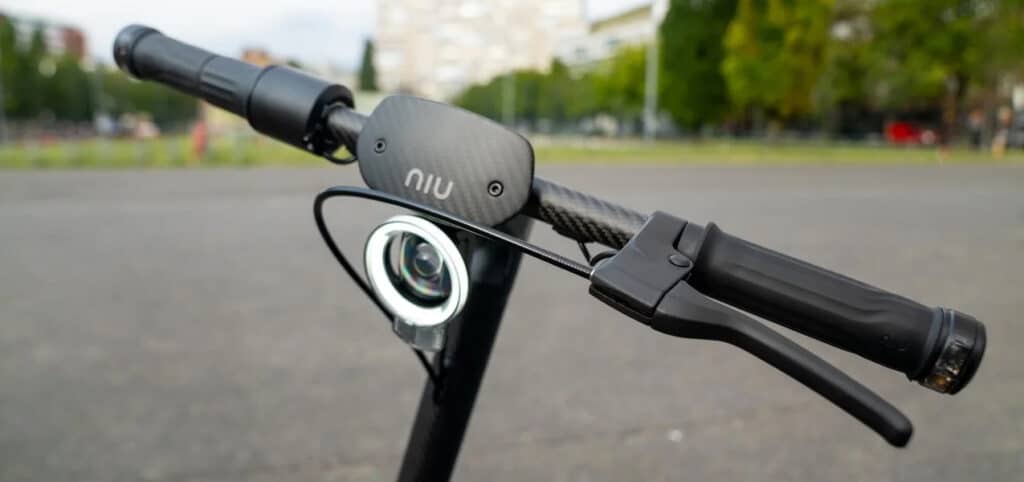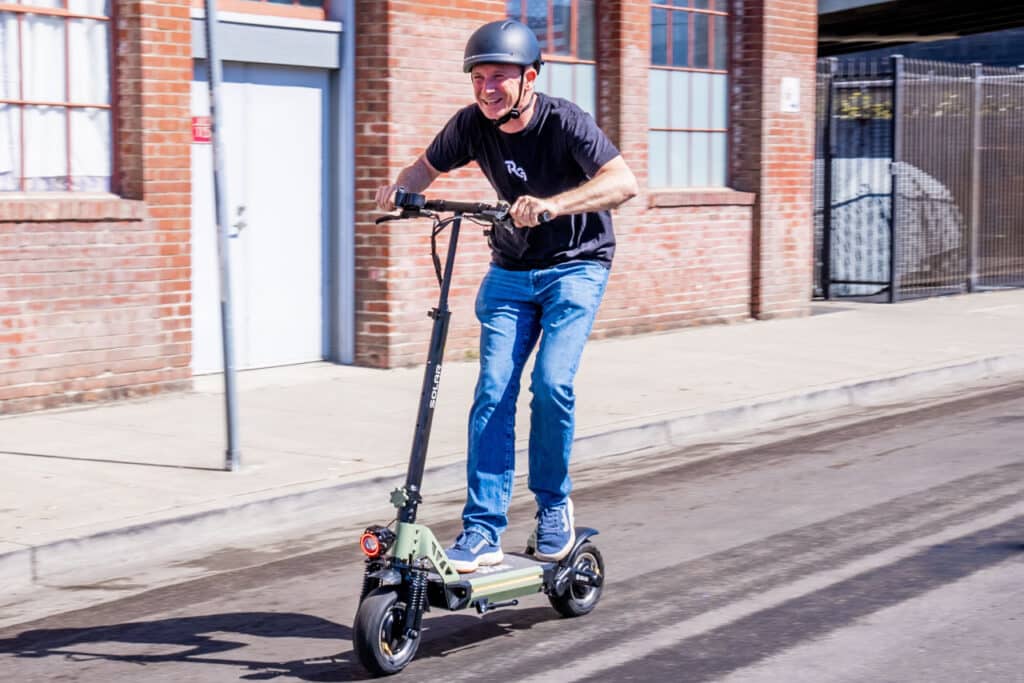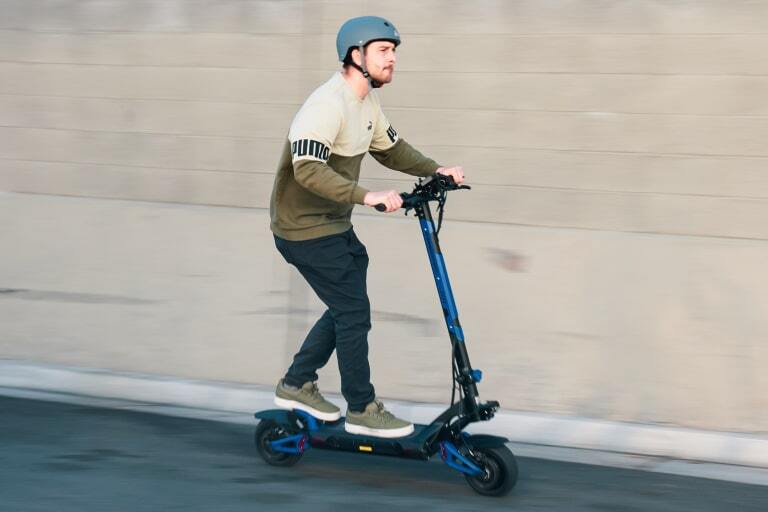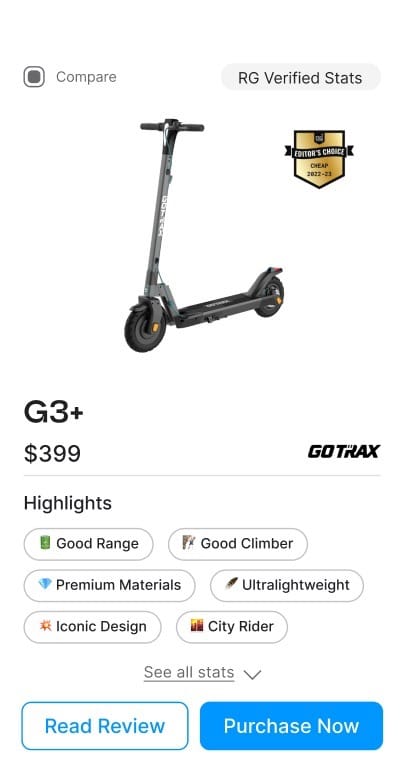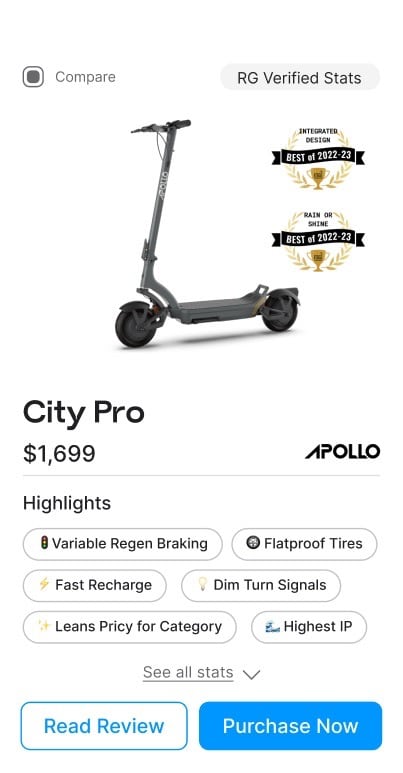Electric Scooter Regenerative Brakes

Electric scooter regenerative brakes are much overhyped. Poorly designed controllers lead to failure and physics prevents any meaningful energy recovery. Read the analysis below to learn how we come to these conclusions.
Activating the regenerative brakes on your electric scooter couples the DC motor into a charging circuit — force-feeding electrons back into your battery — creating drag on the motor. The purported value is providing both a brake and energy savings, which translates into extended range.
Sounds great, right?
The unfortunate reality is that they regenerate very little energy because:
- There isn’t much kinetic energy to capture
- Batteries can’t be recharged very fast
Additionally, they aren’t a great brake because they are only effective when you are going fast. Check out our simple analysis below to learn more (note: our calculations assume a scooter with 250 W motor and 280 Wh = 1 million joule battery, similar specs to the Xiaomi Mi M365).
Regenerative Brakes Are Weak
If you’ve ever used them, you know they do not stop quickly and are wholly inadequate in an emergency situation where your life might depend on braking. The braking strength comes from a counter electromotive force (CEMF) that opposes the rotation of the motor. While braking can be strong initially, it fades quickly because CEMF is created by the forward rotation of the motor.
Electric Scooter Regenerative Brake Energy Analysis
An Electric Scooter and Rider Don’t Have Very Much Kinetic Energy
Kinetic energy is one-half the product of velocity squared and mass. A puny rider and scooter don’t weigh much or go very fast. For example, a 100 kg rider going 30 kmh (~20 mph) has 3,400 joules of kinetic energy (a small fraction of the 1 million joules stored by a typical battery). This is equivalent to only 15 seconds of running time or 120 meters (400 feet) of range.
Batteries Can’t Be Charged Very Fast
All rechargeable batteries have a C-rate which describes how quickly you can charge (and discharge) them. A C-rate of 1 C means that you could fully charge the battery in 1 hour. A high performance lithium ion battery, at best, will have 1 C and be safely charged at a rate of 277 joules / second.
To fully capture the kinetic energy stored by a 100 kg rider at 30 kmh, one would need to extend braking over 14 seconds or a distance of 56 meters (184 feet)! In reality, you will be braking only over a few seconds, capturing just a small fraction of this. Extra range from regeneration? Not a lot (roughly 1% increased range).
<2% Increase in Electric Scooter Range
Let’s assume you make a 30 km trip taking one hour, making one full stop every minute (assume braking time = 2 seconds = stopping distance of 6 m or 20 feet). Total regeneration time would be 60 seconds = 17,000 joules.
This is 1.7% of a typical battery and would increasing range by 1.7% or ~0.5 km / 0.25 miles
Summary
Regenerative brakes are
- Theoretically reliable (though poorly implemented controllers on some electric scooter make them unreliable)
- Causes no additional wear and tear on your scooter because braking comes from the frictionless electromagnetic forces
Don’t pay extra for a regenerative braking system. However, consider it a bonus if a scooter comes with one. Just make sure that the scooter also has a reliable primary braking system.
Learn more in our complete guide to electric scooter brakes.
Related Reviews
